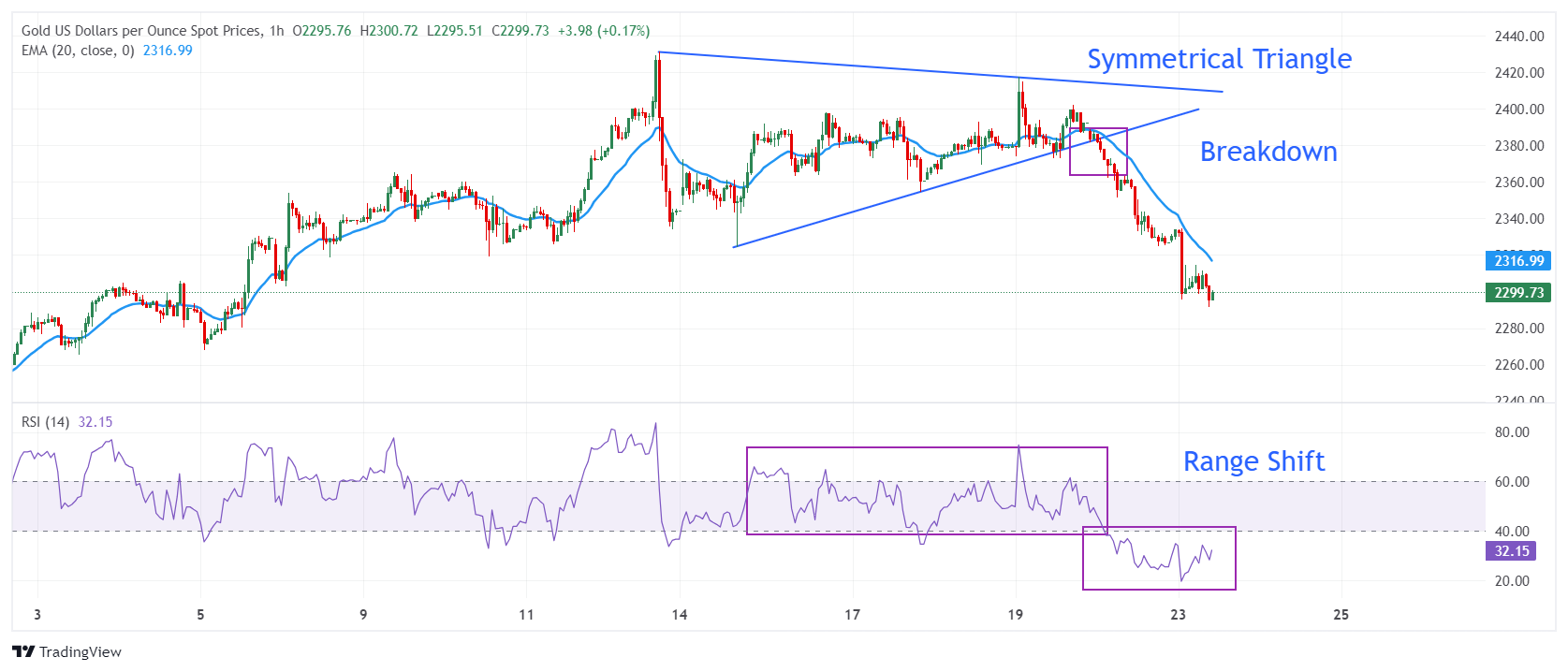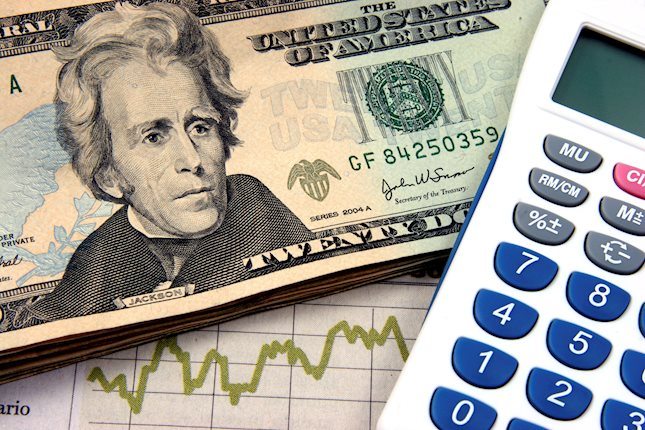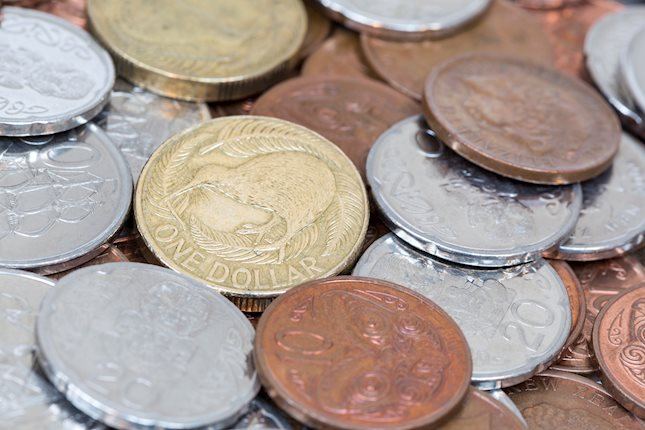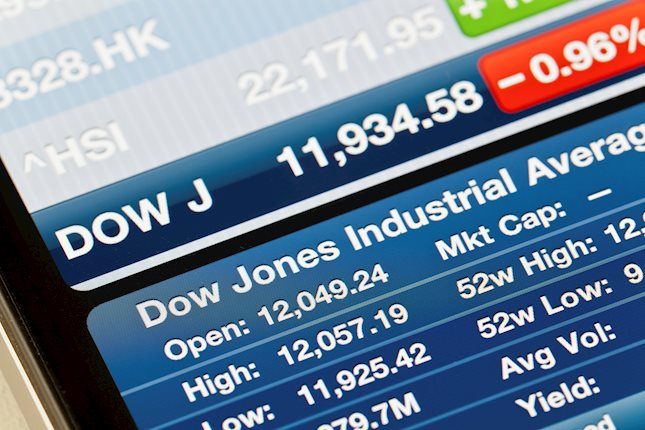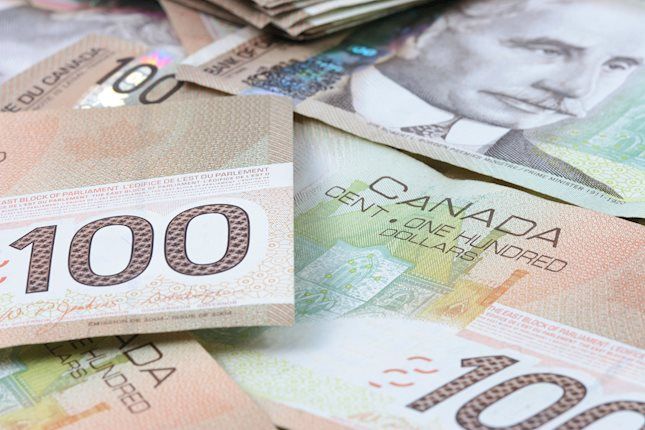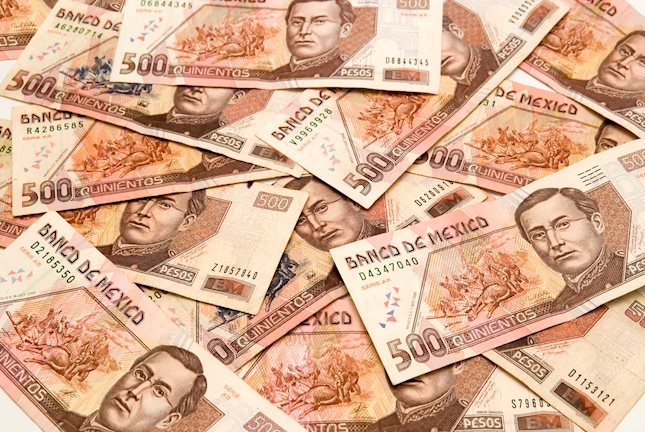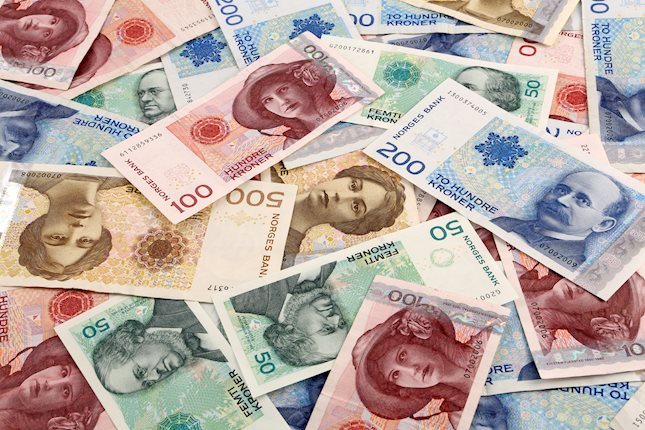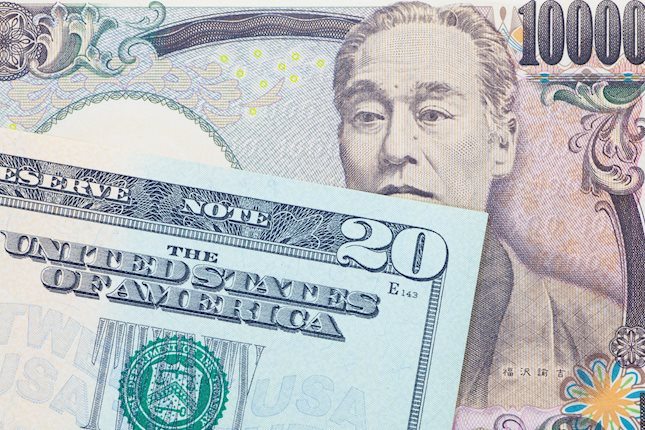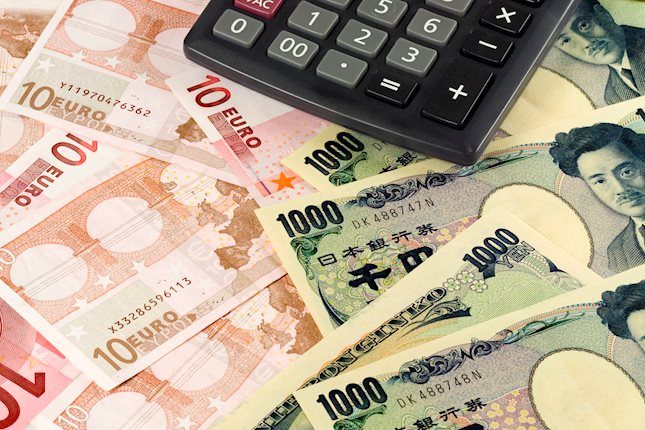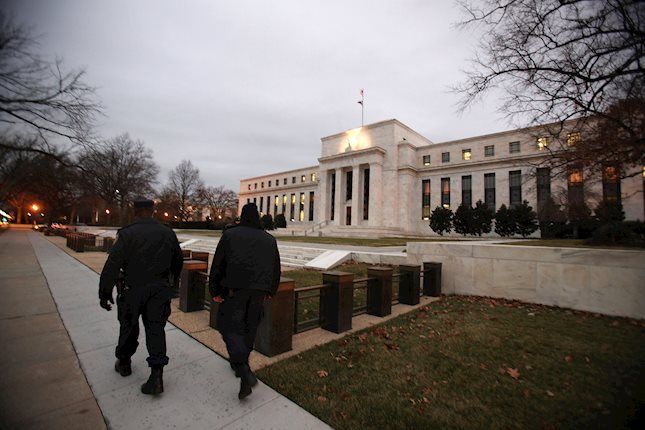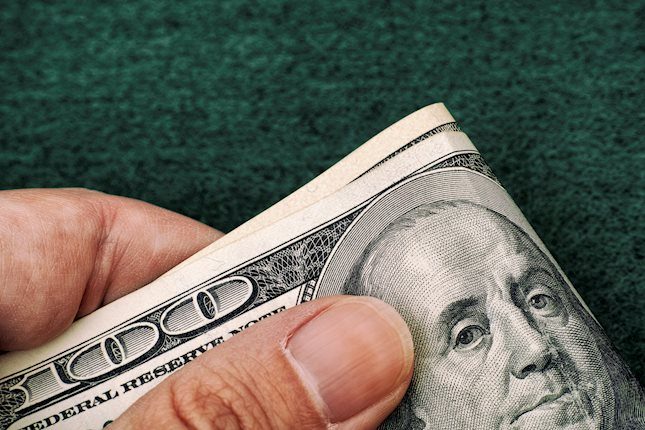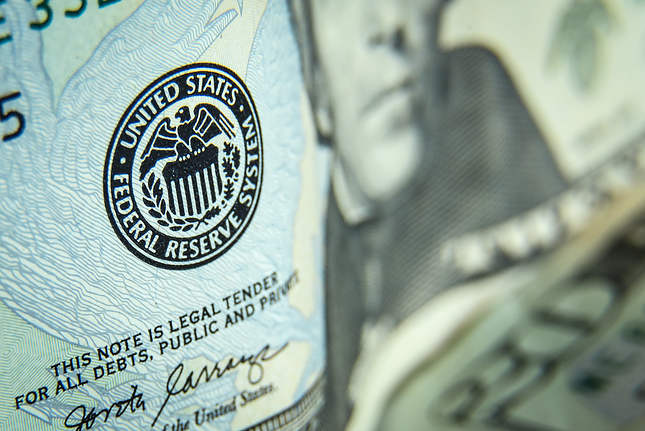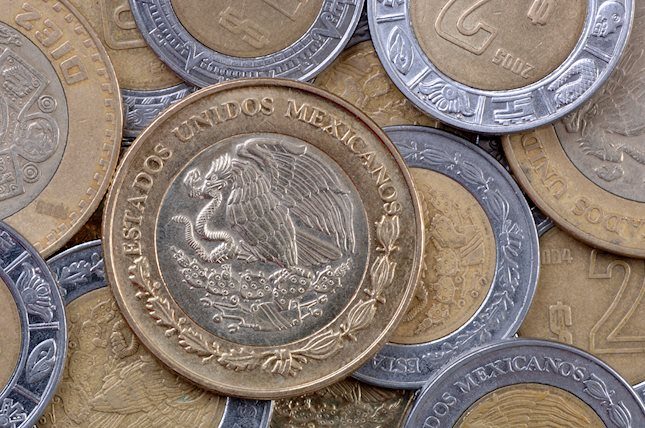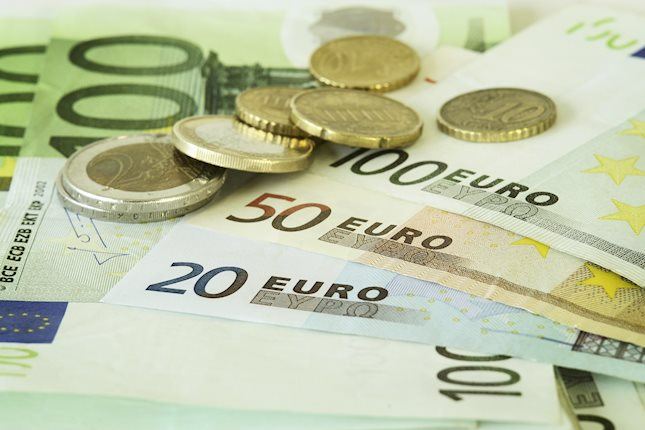Gold price weakens as Middle East tensions ease, weak US PMI provides some relief
- Gold price bounces back from $2,300 as US Dollar edges down after weak PMI data for April.
- Both US Manufacturing and Services PMI surprisingly drop from their prior readings.
- The Fed supports keeping interest rates higher until there is confidence that inflation will return to 2%.
Gold price (XAU/USD) finds support after slipping below the crucial support of $2,300 in Tuesday’s early American session. The yellow metal rebounds after weak S&P Global United States preliminary PMI for April weighed on the US Dollar.
The US Dollar Index (DXY), which tracks the US Dollar’s value against six major currencies, falls below 106.00 after the PMI report turned out weak. The agency showed that the Manufacturing PMI surprisingly fell sharply to 49.9 from expectations of 52.0 and the prior reading of 51.9. A reading below 50.0 is itself considered a contraction. Also, the Services PMI that represents the service sector, which accounts for two-thirds of the economy, drops surprisingly to 50.9 from expectations of 52.0 and the former reading of 51.7. A sharp decline in PMI indicates weak spending by households or the de-stocking of inventory by owners.
The outlook for Gold is still uncertain. Investors shrug off Middle East fears amid hopes that the conflict between Iran and Israel will not escalate further. This has improved investors’ risk appetite while safe-haven demand has waned.
Meanwhile, 10-year US Treasury yields rise to 4.64% as investors shift focus to the US core Personal Consumption Expenditure Price Index (PCE) data for March, which will be published on Friday. The inflation data will provide cues about the Federal Reserve’s (Fed) guidance on interest rates in the May policy meeting, in which policymakers are widely anticipated to keep them unchanged in the range of 5.25%-5.50%. The Fed’s preference for keeping interest rates higher bodes well for the US bond yields and weighs on Gold.
Daily digest market movers: Gold price rebounds though near-term demand is still risky
- Gold price rebounds as the US Dollar slumps after weak US preliminary PMI data for April. Earlier, the Gold came under pressure as safe-haven demand has melted amid easing Middle East tensions. The limited retaliatory attack from Israel on Isfahan against the hundreds of missiles and drones launched in their state on April 13, as well as Iran’s no plan for an immediate response, indicate that both nations aren’t interested in widening the conflict.
- Apart from that, recent hawkish guidance from Federal Reserve policymakers on interest rates also weighed on Gold. Fed policymakers see the current monetary policy framework as appropriate given that inflation has remained stubbornly higher in the first three months of this year and labor demand remains robust.
- Fed policymakers are expected to keep interest rates at their current levels until they get confidence that inflation will come down to the 2% target. Currently, traders expect that the Fed will start reducing interest rates from the September meeting. This week, investors will focus on the US core PCE Price Index data, which will influence expectations for Fed rate cuts.
- The monthly core PCE is estimated to have grown steadily by 0.3%, with annual figures decelerating to 2.6% from 2.8% in February. The core PCE is the Fed’s preferred inflation measure as it excludes volatile food and energy prices. Softer-than-expected US inflation numbers would increase expectations of early rate cuts by the Fed, which will help Gold gauge a firm footing. On the contrary, sticky or hotter-than-expected figures will likely weigh on Gold prices.
- Before the US core PCE inflation data, investors will focus on the preliminary Q1 Gross Domestic Product (GDP), which exhibits the performance of the US economy in the period. The economy is anticipated to have expanded at an annualised pace of 2.5%, slower than the 3.4% increase noted in the last quarter of 2023.
Technical Analysis: Gold price finds cushion near $2,300
Gold price finds temporary support after facing an intense sell-off post breakdown of the Symmetrical Triangle formation on the hourly time frame. The precious metal slips below $2,300 as a downside break of the above-mentioned pattern explodes the volatility, resulting in wider ticks on the downside and heavy selling volume.
The 20-period Exponential Moving Average (EMA) at $2,317 is acting as a major barricade for the Gold price bulls. The 14-period Relative Strength Index (RSI) has delivered a range shift move from the 40.00-60.00 territory to the 20.00-40.00 region, indicating that a bearish momentum has been triggered.
US Dollar FAQs
The US Dollar (USD) is the official currency of the United States of America, and the ‘de facto’ currency of a significant number of other countries where it is found in circulation alongside local notes. It is the most heavily traded currency in the world, accounting for over 88% of all global foreign exchange turnover, or an average of $6.6 trillion in transactions per day, according to data from 2022. Following the second world war, the USD took over from the British Pound as the world’s reserve currency. For most of its history, the US Dollar was backed by Gold, until the Bretton Woods Agreement in 1971 when the Gold Standard went away.
The most important single factor impacting on the value of the US Dollar is monetary policy, which is shaped by the Federal Reserve (Fed). The Fed has two mandates: to achieve price stability (control inflation) and foster full employment. Its primary tool to achieve these two goals is by adjusting interest rates. When prices are rising too quickly and inflation is above the Fed’s 2% target, the Fed will raise rates, which helps the USD value. When inflation falls below 2% or the Unemployment Rate is too high, the Fed may lower interest rates, which weighs on the Greenback.
In extreme situations, the Federal Reserve can also print more Dollars and enact quantitative easing (QE). QE is the process by which the Fed substantially increases the flow of credit in a stuck financial system. It is a non-standard policy measure used when credit has dried up because banks will not lend to each other (out of the fear of counterparty default). It is a last resort when simply lowering interest rates is unlikely to achieve the necessary result. It was the Fed’s weapon of choice to combat the credit crunch that occurred during the Great Financial Crisis in 2008. It involves the Fed printing more Dollars and using them to buy US government bonds predominantly from financial institutions. QE usually leads to a weaker US Dollar.
Quantitative tightening (QT) is the reverse process whereby the Federal Reserve stops buying bonds from financial institutions and does not reinvest the principal from the bonds it holds maturing in new purchases. It is usually positive for the US Dollar.
Forex News
Keep up with the financial markets, know what's happening and what is affecting the markets with our latest market updates. Analyze market movers, trends and build your trading strategies accordingly.

